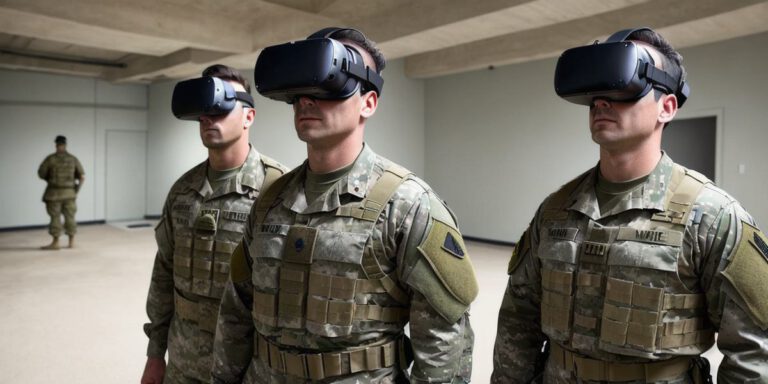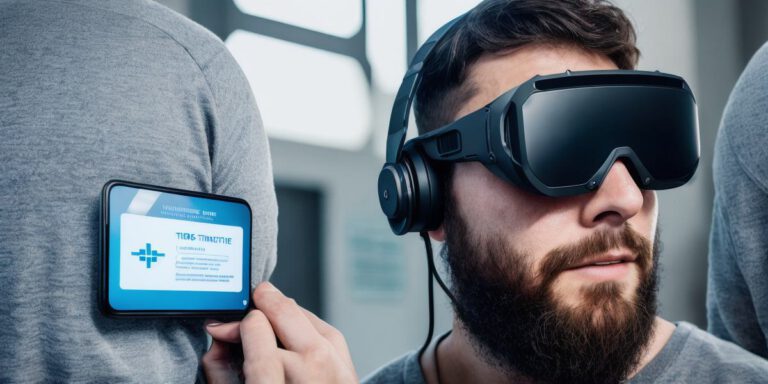The Power of VR-Based Exposure Therapy for PTSD: Transforming Lives through Immersive Technology

Post-traumatic stress disorder (PTSD) is a debilitating mental health condition that affects millions of individuals worldwide. Traditional treatment methods such as talk therapy and medication have limitations, and many patients struggle to find relief from their symptoms. However, recent advancements in virtual reality (VR) technology offer a promising alternative: VR-based exposure therapy.
In this article, we will explore the benefits of using VR technology to treat PTSD and how it empowers healing and recovery. We will also examine real-life examples and case studies to illustrate the effectiveness of VR-based exposure therapy in transforming lives.
How VR Technology Works for PTSD Treatment
VR technology allows patients to simulate traumatic situations in a controlled environment, providing them with the opportunity to confront and process their fears in a safe and effective way. By gradually exposing patients to realistic simulations of their triggers, VR-based exposure therapy can help reduce anxiety, improve coping skills, and promote recovery from PTSD.
Research has shown that VR-based exposure therapy is highly effective in treating PTSD. A study published in the Journal of Traumatic Stress found that patients who received VR exposure therapy had a 64% reduction in symptoms compared to those who received traditional talk therapy. Additionally, a study in the American Journal of Psychiatry found that VR-based exposure therapy was as effective as cognitive behavioral therapy (CBT) in reducing symptoms of PTSD.
Real-Life Examples of VR-Based Exposure Therapy
One example of the effectiveness of VR-based exposure therapy can be seen in a study conducted by the University of Oxford. Patients who received VR-based exposure therapy for social anxiety disorder showed significant improvements in their symptoms compared to those who received traditional talk therapy. In fact, some patients reported feeling completely free from their social anxiety after just one session of VR-based exposure therapy.
Another example can be seen in a study conducted by the Veterans Health Administration (VHA). The study found that VR-based exposure therapy was highly effective in reducing symptoms of PTSD in veterans who had experienced combat-related trauma. Participants reported feeling more relaxed and better able to cope with their symptoms after completing the VR-based exposure therapy program.
The Power of Immersive Technology in Empowering Healing
VR technology offers a powerful tool for PTSD treatment that can empower healing and recovery. By providing patients with realistic simulations of their triggers, VR-based exposure therapy allows them to confront and process their fears in a safe and controlled environment. This can lead to significant reductions in symptoms and improved coping skills, ultimately promoting recovery from PTSD.
Moreover, VR technology offers the added benefit of flexibility and accessibility. Patients can receive VR-based exposure therapy in the comfort of their own homes or at a specialized clinic, making it easier for those who may have difficulty attending traditional therapy sessions. Additionally, VR technology can be customized to meet the specific needs of individual patients, ensuring that they receive the most effective and personalized treatment possible.
FAQs
Q: What is VR-based exposure therapy?
A: VR-based exposure therapy uses virtual reality technology to simulate traumatic situations in a controlled environment, allowing patients to confront and process their fears in a safe and effective way.
Q: Is VR-based exposure therapy effective in treating PTSD?
A: Yes, research has shown that VR-based exposure therapy is highly effective in reducing symptoms of PTSD. It can be as effective as cognitive behavioral therapy (CBT) in some cases.
Q: What are the benefits of using VR technology for PTSD treatment?
A: The benefits include flexibility and accessibility, customization to meet individual needs, and a safe and controlled environment for confronting and processing fears.








